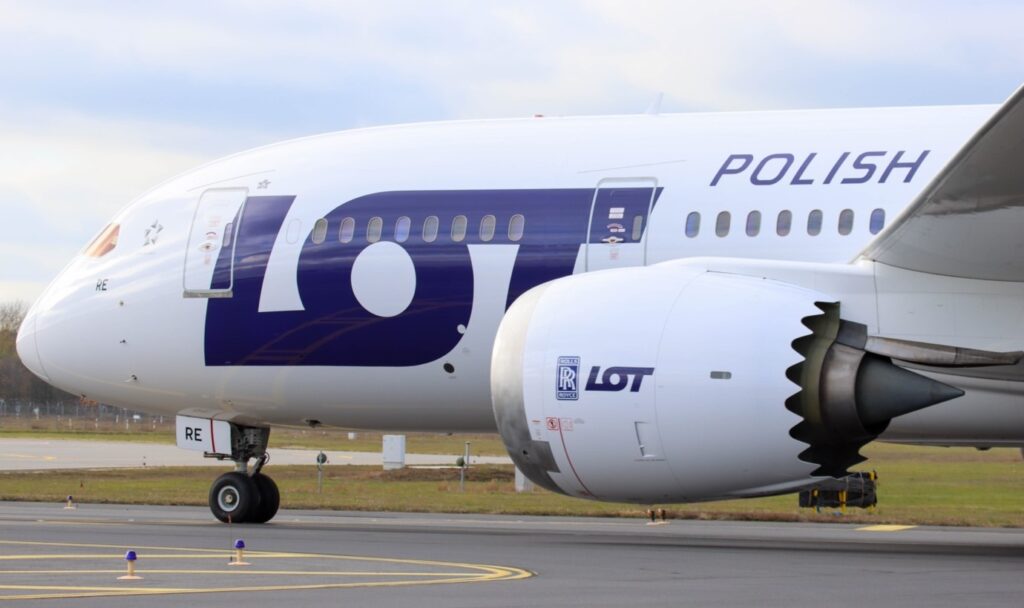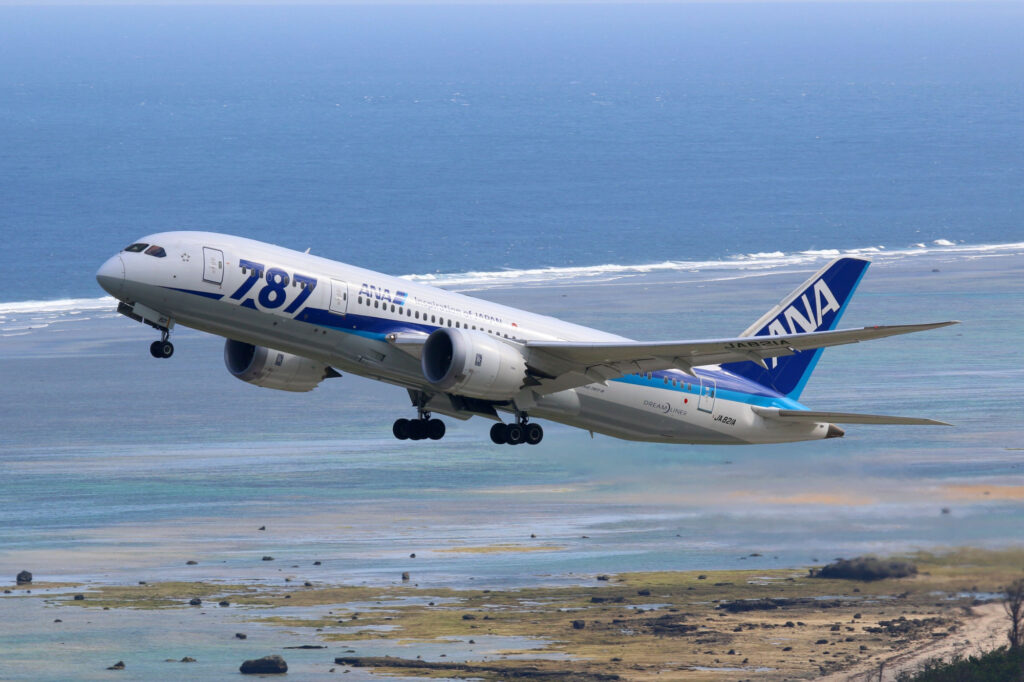The Boeing 787-8, also known as the 787 Dreamliner, is a popular and versatile commercial aircraft recognized for its efficiency, range and passenger comfort. It was the original member of the Boeing 787 family, followed by the newer 787-9 and 787-10 variants.
In this article, we will explore the history of the 787 Dreamliner family, the 787-8 performance, technical characteristics and its key advantages and features.
Aircraft history and the birth of the 787 Dreamliner family
The Boeing 787 Dreamliner originated as a response to the aviation industry’s need for more fuel-efficient and environmentally friendly aircraft. It was designed to replace the aging Boeing 767 and compete with the Airbus A330. It introduced a revolutionary composite airframe, lower maintenance costs, advanced systems and improved fuel efficiency, setting new industry standards.
The first variant introduced was the 787-8, which made its inaugural flight on December 15, 2009. On October 26, 2011, All Nippon Airways became the first airline to start using the type.
How does it differ from the 787-9?
Though the 787-8 and 787-9 share many similarities, the key difference between them lies in their size and seating capacity. The 787-8 accommodates 210-248 passengers in a two-class configuration, while the 787-9 has a higher capacity, seating around 240-296 passengers in the same configuration. The 787-9 is capable of flying slightly longer-range journeys compared to the 787-8.
Advantages and key features of 787-8
- Fuel efficiency: the Boeing 787-8 boasts exceptional fuel efficiency, thanks to its aerodynamic design, advanced engines and use of lightweight composite materials. It offers approximately 20% lower fuel consumption per seat compared to older aircraft models, reducing operating costs and environmental impact.
- Range: with a range of 7,305 nautical miles (13,530 kilometers), the 787-8 has the capability to serve both short and long-haul routes, offering airlines increased flexibility in network planning.
- Passenger comfort: the 787-8 prioritizes passenger comfort with features such as larger windows, improved cabin pressurization, reduced noise levels and enhanced air quality. The aircraft’s advanced lighting systems also mimic natural light patterns, reducing jet lag and enhancing the onboard experience.
- Advanced technology: the 787-8 incorporates advanced avionics and flight systems, including fly-by-wire controls, which provide smoother and more precise flying. It also features improved maintenance systems, enabling airlines to monitor and diagnose potential issues more effectively, leading to reduced downtime.

Performance and technical specifications
The aircraft has two engine options: General Electric GEnx or Rolls-Royce Trent 1000. Both deliver exceptional fuel efficiency and reduced emissions, making either one an environmentally friendly choice for airlines. The GEnx engine, derived from the GE90 engine, is a high-bypass turbofan jet engine that offers exceptional value and reliability with minimal risks. It boasts a notable 15% improvement in fuel efficiency compared to its predecessor, General Electric CF6.
The Trent 1000 engine represents a significant advancement from the earlier Trent series engines. It stands out as the cleanest and lightest engine within its family. The Trent 1000 engine is specifically optimized to power Boeing 787 Dreamliner aircraft.
The advanced engines, coupled with aerodynamic enhancements, enable the Dreamliner to achieve a longer range.
The aircraft also incorporates a number of innovative features, including its lightweight airframe made primarily of composite materials such as carbon fiber reinforced polymer, resulting in a lighter weight and improved fuel efficiency. Additionally, the Dreamliner utilizes chevrons to reduce noise, providing a quieter and more pleasant flying experience for passengers.
| Specs | Boeing 787-8 Dreamliner |
| Crew Capacity | 2 flight crew |
| Passenger Capacity | Approximately 210-248 (two-class configuration) |
| Length | 186 feet (57 meters) |
| Wingspan | 197 feet (60 meters) |
| Height | 56 feet (17 meters) |
| Maximum Takeoff Weight (MTOW) | 502,500 pounds (227,930 kilograms) |
| Payload | A maximum of 90,500 pounds (43,318 kilograms) |
| Range | A maximum of 7,305 nautical miles (13,530 kilometers) |
| Cruising Speed | Mach 0.85 (approximately 488 knots or 903 kilometers per hour) |
| Engines | General Electric GEnx or Rolls-Royce Trent 1000, each engine can produce between 53,000lb and 75,000lb of thrust |
| Fuel Efficiency | Approximately 20% more fuel-efficient than similar-sized aircraft |
| Materials Used | Carbon fiber reinforced polymer composites, titanium, aluminum alloys |
| Avionics | Honeywell and Rockwell Collins |
Production and price
By June 2023, around 26% of all 787 orders had been for the 787-8 variant, with a notable 390 deliveries completed.
During the year 2019, the listed price for a 787-8 aircraft amounted to US$248.3 million.

